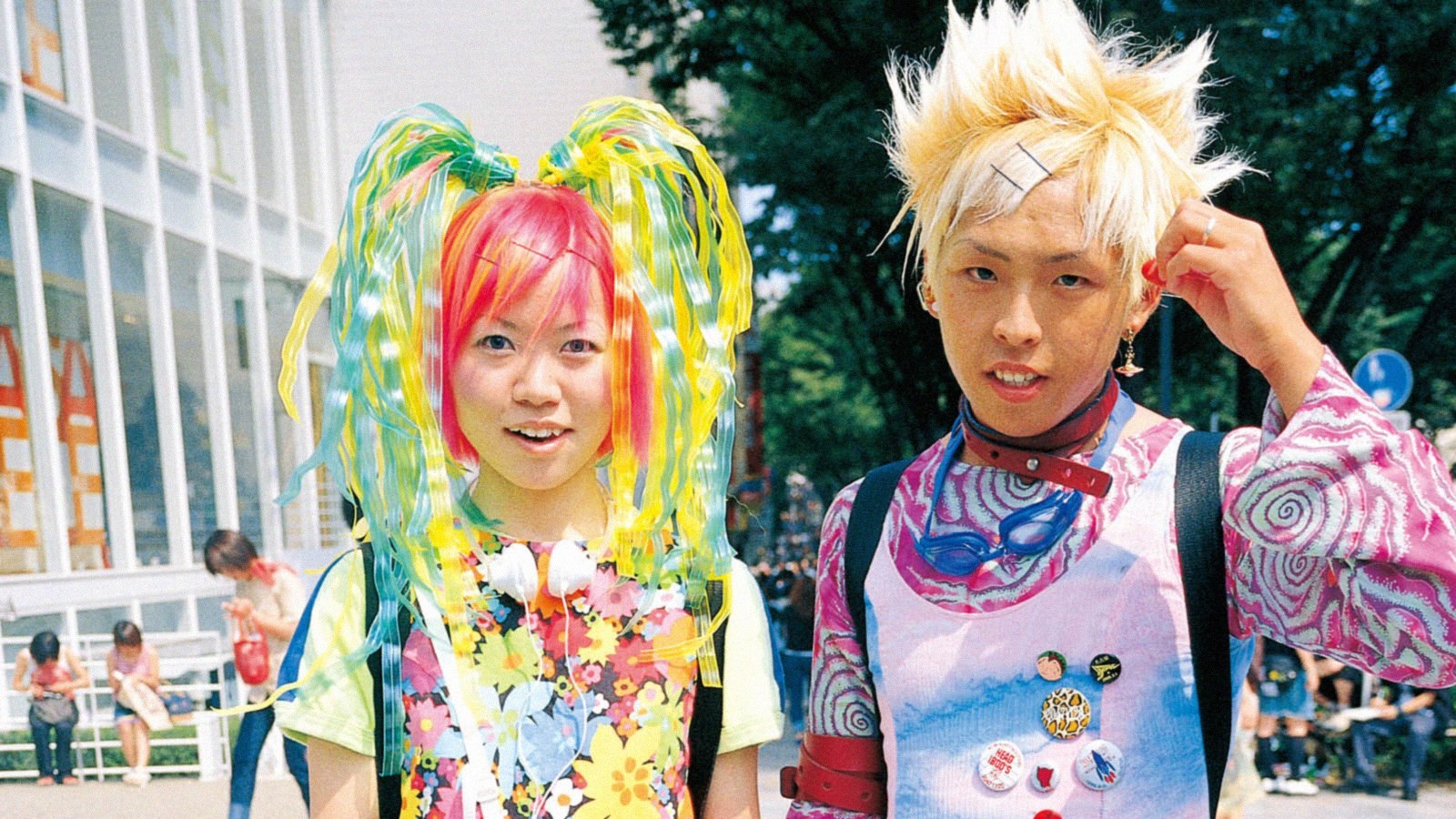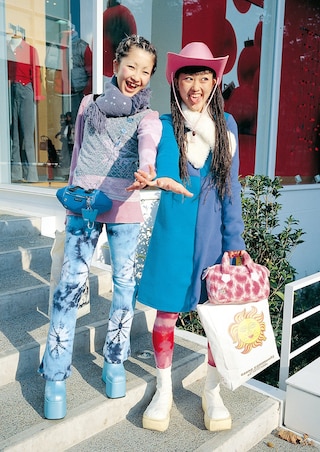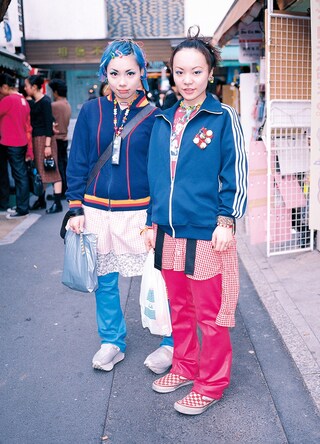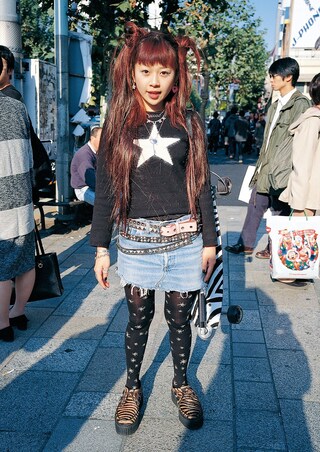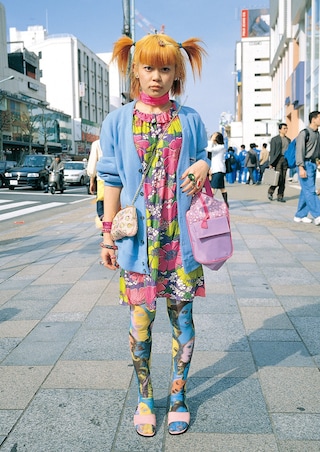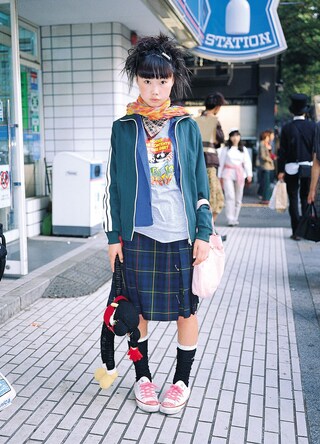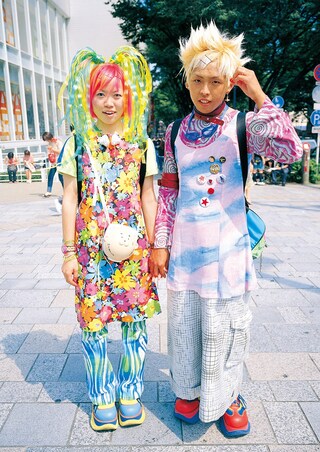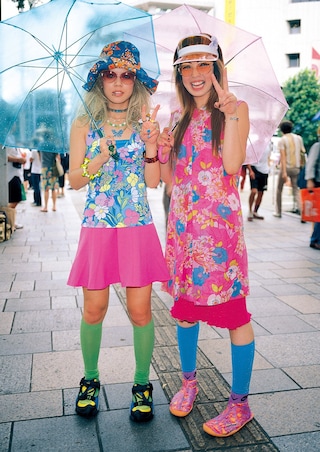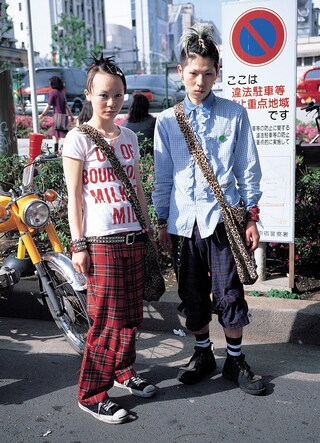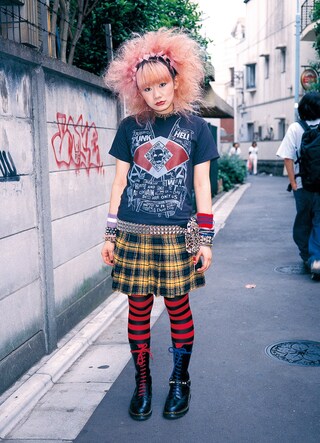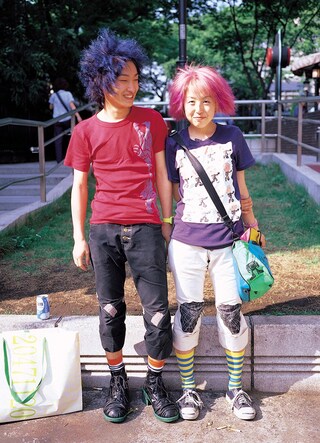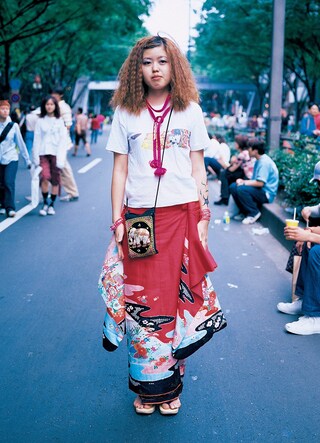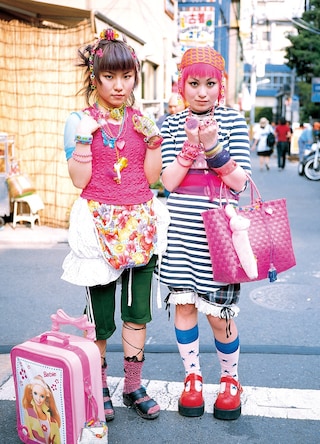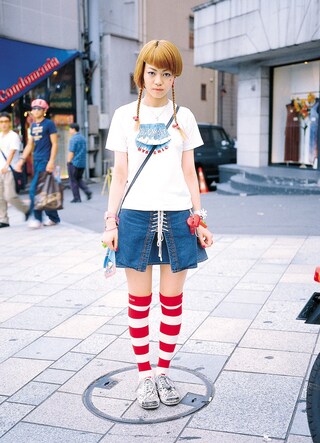Opening up his archives of Harajuku street style in the 90s, Shoichi Aoki reveals the story behind the groundbreaking fashion of Tokyo’s most influential subculture
“Fashion is a kind of ability”, says legendary street style photographer and publisher Shoichi Aoki, before embarking on one of the unlikeliest, but most accurate, analogies I’ve heard in response to the eternal question, ‘What makes good style’? “It’s much like people who are good at football. As you get better, the subtle moves and plays might not be perceptible to the average person, but to football fans they are vital. Fashion also has an element of this. It’s a little different than saying that they dress just for themselves.”
‘They’ are the Harajuku kids that Aoki recorded in the late 90s and early 00s for his magazine Fruits (stylized FRUiTS). For these teenagers, style wasn’t about dressing just for yourself, or for other people – as has always been the case, it’s a little more complicated than that. The nuances of the Batcavers’ proto-gothic use of makeup in the North of England in the 80s, or UK garage’s ostentatious label-collecting in the noughties, for instance, have also proved imperceptible to those on the outside – whether that’s parents, teachers or politicians.
But the clothes worn in one square mile of Tokyo in the 90s proved particularly resistant to outsider interpretation, even in subcultural terms. The Harajuku ‘scene’, so-called after the neighbourhood which formed its epicentre, dates in some form from some fifty years ago, but the post-bubble era of the early 1990s birthed a new breed of youth culture in the area defined by its multiple, overflowing styles: Kawaii, Gothic Lolita, Cyberpunks, Decora style, even “Fushigi-chan” (“mystery kids”, so called because nobody quite knows what the heck to call them). The styles on display were frenetic, fluid and slightly insane, with girls (and matchy-matchy girl/boy couples) erupting in a surge of saccharine-sweet colour and strange silhouettes. Teenage girls, neither “pretty” nor “sexy” (though many of them cute) told the world what they were, without the world telling them.

Though often associated with goings-on in Harajuku in the 90s, Aoki had been capturing street style photography in the city for some years before he started Fruits. A former computer programmer, he moved to London in the 80s, where he started taking photographs of the nonconforming street fashion he saw there. After returning to Tokyo from Europe in 1985, he started STREET magazine to give local youth a taste of radical street style abroad – as he calls it, his “slice of time and space.”
But in 1997, something in the air changed. “I’d been living in Harajuku since 1986, but had never thought to photograph there,” he explains, citing the stale fashions of the time. “(Then) in 1997 I discovered a new kind of style in Harajuku that I had never seen before in Japan”. The catalyst for starting Fruits, he tells me, was a single sighting of three girls, walking along the pavement. “They had brightly coloured hair, with a mix of kimono items and western clothes,” he recalls. “Looking back, we think of these elements as mundane, but at the time they were fresh. These girls made the new style.”
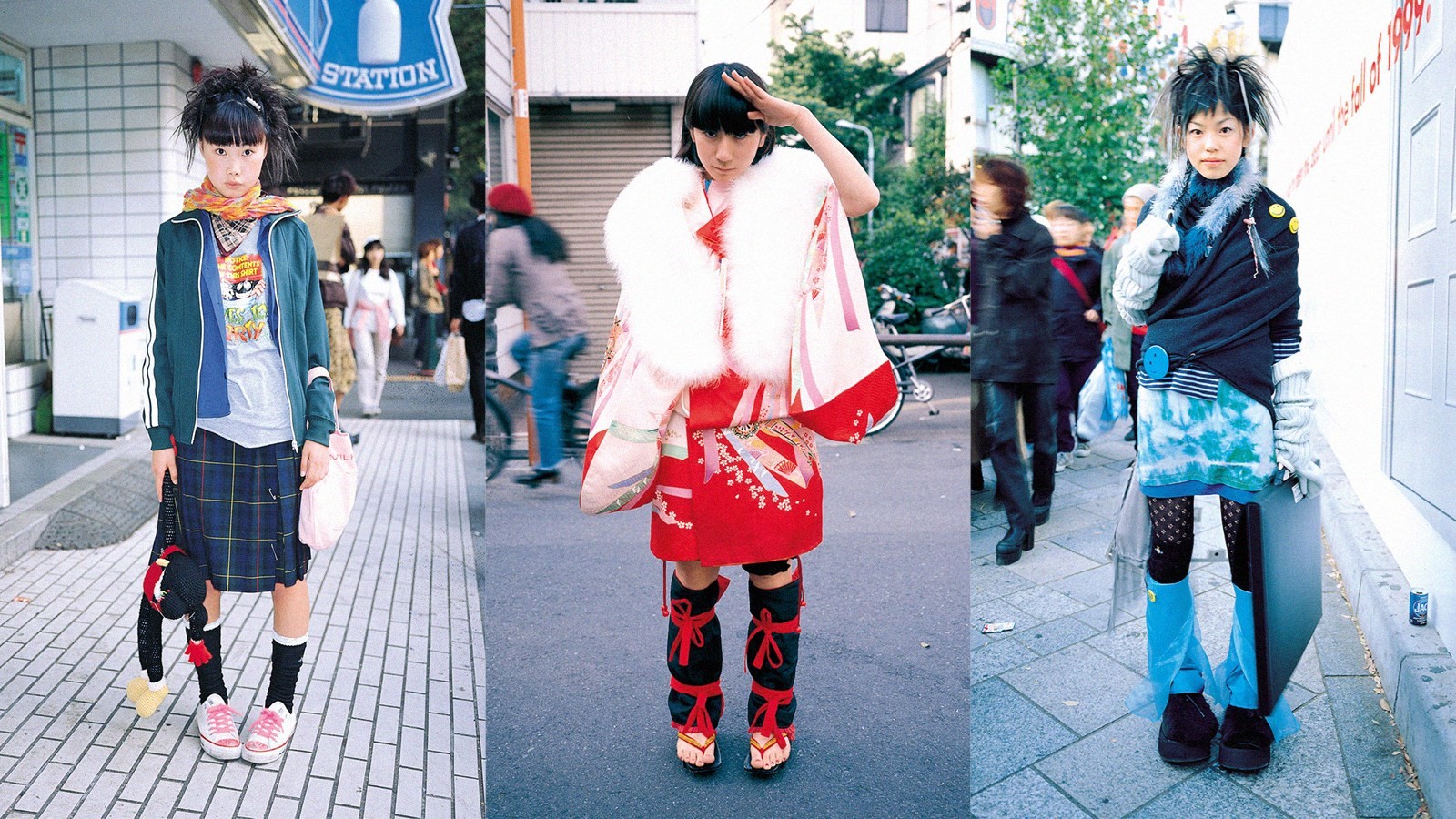
Look up the word “contradiction” in the dictionary and you’ll find the island nation of Japan. An understanding of the country as a culture based on impermanence, opposites and general clash is one agreed upon by all who have gone there as well as everybody who hasn’t. But the idea of pick 'n' mixing tropes of Japan’s cultural heritage with the cultural influx of Western ideas wasn’t always second nature. As Aoki explains, it was previously largely avoided. “For Japanese people, it is very difficult to mix traditional Japanese clothing elements with Western dress. It’s very difficult to get it right,” he says, adding, “For fashion designers it approaches the realm of taboo. Even Comme des Garçons and Yohji Yamamoto have only done it once or twice.” In fact, the Harajuku kids more likely channelled the stylings of their grandparents than the higher echelons of fashionable, Paris-centric taste. “For many years, grandmothers had been remaking their kimono into western clothing, but that is dangerous ground for someone in fashion to enter!”
In the 1980s, Japanese avant-gardeists like Rei Kawakubo at Comme des Garçons, Yohji Yamamoto and Issey Miyake redefined the way we think about fashion. With each collection they ripped up the industry’s collective assumptions and started again: at Comme, colour was out, and unruly volumes and defective fabrics were in. While it might be tempting to see at least the anarchic spirit of these designers as echoed in the street stylings of Tokyo’s youth in the 90s, Aoki maintains that there exists a huge gulf between these historical moments. In fact, the bold and bright Harajuku style was something of a chemical reaction to Rei and her ‘crows.’ “The harajuku fashion movement was a counter-movement to the designer boom of Kawakubo, Miyake and Yohji”, says Aoki. “In the wake of a boom like that, everything that comes out of it starts to look unfashionable. Bright colour is a perplexing area in fashion...and a challenge to it.”
“It is very difficult to mix traditional Japanese clothing elements with Western dress... For fashion designers it approaches the realm of taboo. Even Comme des Garçons and Yohji Yamamoto have only done it once or twice” – Shoichi Aoki
In the end, what’s so enduring about the cultivation of Harajuku’s out-of-this-world style in these years is its absolute uniqueness. Kawakubo may have ‘invented black’, but so too did Coco Chanel, and John Singer Sargent. But the potent mix of cultural influences that culminated in a section of Japanese youth dedicating their lives (or at least, their Sunday afternoons) to collectively dress like nothing anyone had seen before was, in 1997, a total one-off. “The kids made their own original fashion”, he says, citing the mixture of Japanese traditional items like the kimono and tabi shoes with the Western influence of punk and gothic clothing. “The early Fruits years were the first time young people had entered that territory. What’s more, I think they gave a perfect answer. There’s been almost nothing like it since then.”
He’s right – there hasn’t. Etched in our cultural consciousness as enduringly ‘Japanese’, the photos in Fruits are nonetheless completely of their own time. Though the magazine is still in production today, the density and cross-pollination of over-the-top styles are a product of a different environment than Harajuku offers today. Aoki, now heading up a global team of photographers for his magazine empire (including Tune, for menswear and the aforementioned Street) stopped shooting Fruits himself in 2002. But the decline began much earlier than that. “In July 1997, the Harajuku pedestrian paradise was shut down. The Hokoten [as it was colloquially called] was a vital place of nurture for Harajuku fashion. In order to let the tiny roots take hold and nurture the small movement that was taking place, we needed the Hokoten. It didn’t deteriorate suddenly. Rather, Harajuku became less and less like itself.” When he describes his style of photographing his subjects as like “sculptures in a gallery”, I’m inclined to agree – the artistry is full of life, but stillness traps them in a particular time frame, and a particular place.
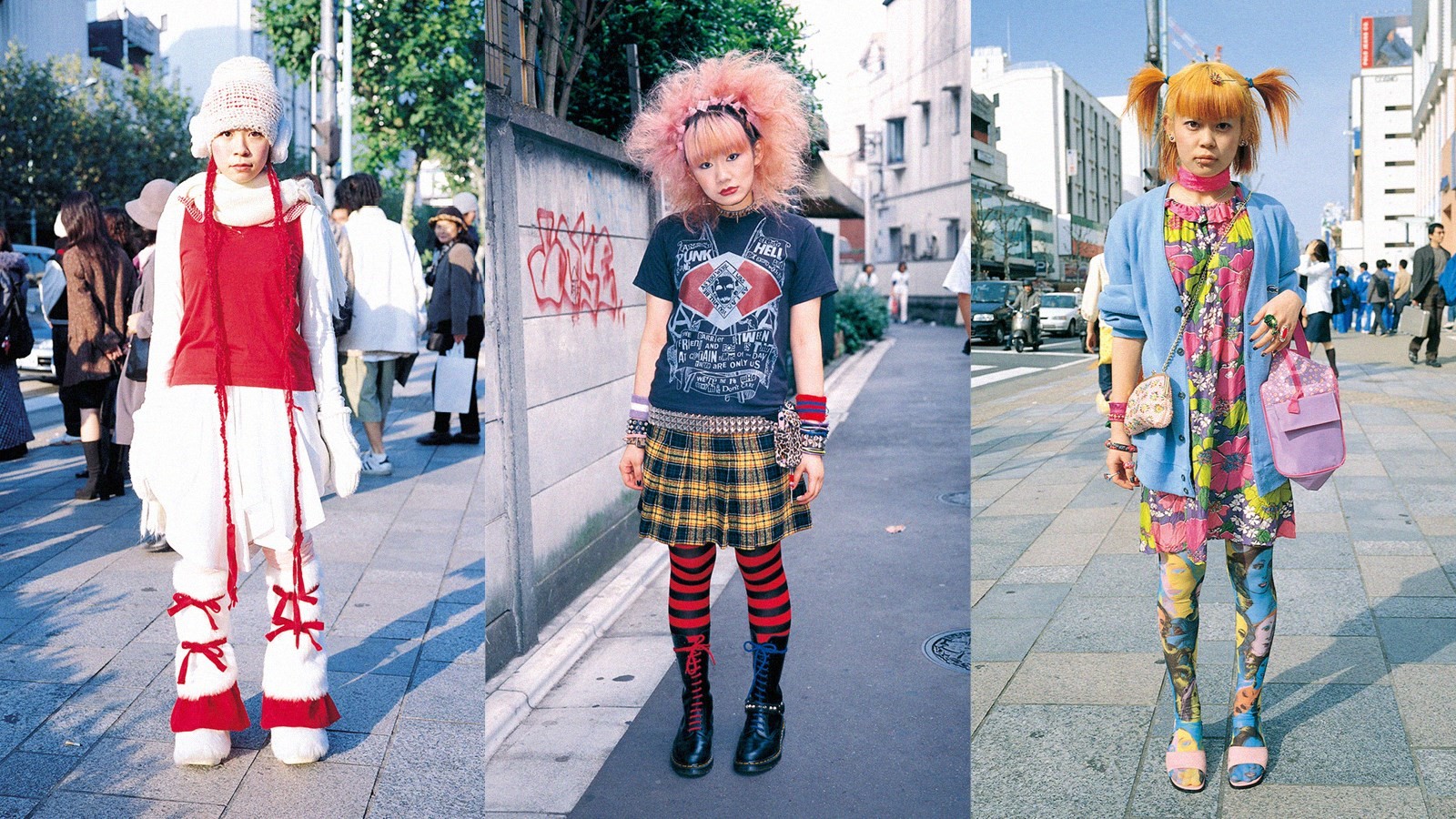
Lucky for us Harajuku fangirls, Aoki is currently working on digitising the entire Fruits archive – 20,000 photos taken between now and the present day, only ever seen in the regular fanzine or Aoki’s popular Phaidon publications, Fruits and Fresh Fruits. “There is potential to create a different, equally special thing online”, he says. “I’ve got an image of something like the playlist on iTunes in my mind... But before I do that I’d like to donate the entire archive to fashion institutes or groups around the world for preservation and use. I think I might be the only person who has an archive of 80s London and Paris along with 90s Harajuku, so it’s my duty to make it public.”
I walked around Harajuku myself a couple of years ago, excitedly seeking out Decora girl gangs and anarchic cyberpunks. But, true to Aoki’s narrative today, I found the characters I’d gazed at in Fruits a somewhat endangered species. My beloved Harajuku girls had been replaced by a new breed – Monocle-reading, Normcore-sporting, even ‘Daunt Books’ tote-toting teenagers were the new uniform. As so often with records of style subcultures, the urge is to take up arms on behalf of those founding heroines – to give their self-expression a larger meaning, to extend their life with a message. But the Harajuku girls always did resist a manifesto, as Aoki’s photography recognised. “90s fashion was creative,” he says. “But Harajuku fashion is not a rebellion against something.” It is, simply, an ability.
With thanks to Daphne Mohajer for her translation of this interview.
